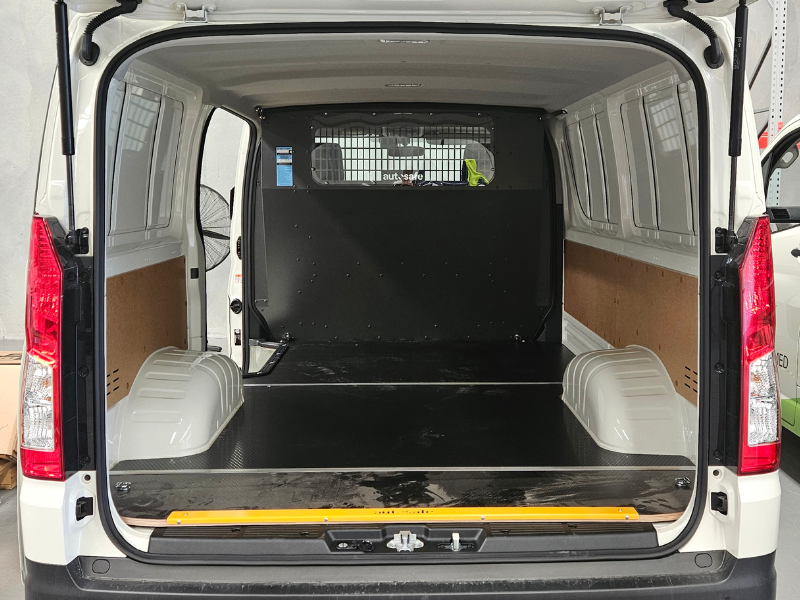
What is the difference between an Anti-Vapour Partition and a Cargo Barrier?
ANTI-VAPOUR PARTITIONS
A van Anti-Vapour Partition and a Cargo Barrier are two different types of safety equipment used in vehicles, particularly vans or commercial vehicles.
An Anti-Vapour Partition, also known as a bulkhead, is a barrier or divider installed in the cargo area of a van. It separates the driver and passenger compartments from the cargo area. The purpose of an anti-vapour partition is for Driver safety and to prevent the ingress of fumes, odours, or vapours from the cargo area into the passenger compartment. It helps maintain a safe and comfortable environment for the driver and passengers by minimizing exposure to potentially harmful substances or unwanted smells and to protect the Driver from the load moving forward into the front of the vehicle.

The Anti-Vapour Partition is typically made of solid materials such as metal and is installed between the driver’s seat and the cargo area. It acts as a physical barrier, preventing objects from shifting or moving into the driver’s area during sudden stops or accidents.
CARGO BARRIERS
A Cargo Barrier is a safety device designed to secure the cargo within the load area of a vehicle, especially in vans, SUVs, or station wagons. Its primary function is to create a physical barrier between the cargo area and the passenger compartment, preventing the cargo from shifting forward in the event of sudden braking, acceleration, or a collision.
Cargo Barriers are typically constructed using rigid materials like steel or mesh, and they are installed behind the rear seats or at the rear of the vehicle, depending on the design. They are specifically designed to withstand the forces generated during a crash or sudden deceleration, thereby protecting the occupants from potential injuries caused by unsecured cargo.

The Cargo Barrier helps maintain the balance and stability of the vehicle by keeping the cargo securely in place. It reduces the risk of cargo-related accidents, such as objects flying forward and striking the occupants during a collision.



